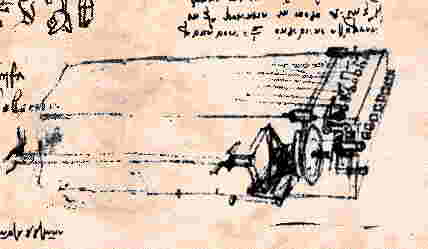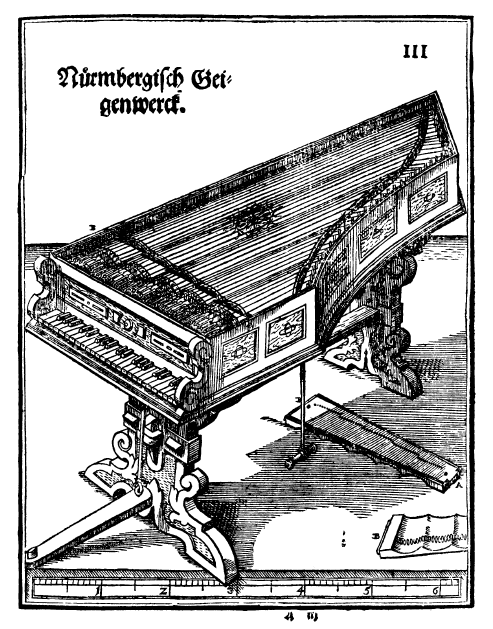The idea of a bowed string instrument controlled by a keyboard has been around at least since Leonardo sketched a concept for the viola organista around 1488. The most successful realization of the idea is the hurdy-gurdy, which uses a rosined wheel turned with a hand crank to simultaneously bow several strings at once. The different notes are achieved by a mechanism of buttons attached to tangents which shorten one or more of the strings. But this is not properly a keyboard instrument.

Leonardo’s concept is the one most commonly used in attempts to created a truly polyphonic keyboard. In essence, the piano-like key lever is attached to a simple looped wire through which the string passes. Pressing the key pulls the loop and string against a rosined wheel. The advantages of such a device are compelling — a sustained note can be played as on an organ, but the player can also continuously affect the the dynamics of the note by adjusting pressure on the key, effectively allowing a nuanced vibrato if desired. Probably the best known historical example is the Geigenwerk, invented in Nuremberg 1575 by Hans Haiden and related by Praetorius in his Syntagma Musicum.

Geigenwerk from Praetorius
But the actual mechanics of the bowed keyboard have been a challenge from day one. The most obvious problem is the rosined circular wheel used to activate the string. Ideally, one would want to have every string pulled in the direction of the center of the wheel. In order to make that happen you need an elaborate mechanism or a round keyboard. Round keyboard? Indeed yes. To wit this latest incarnation of the Geigenwerk, here called a Wheel Harp for no obvious reason, by Antiquity Music of California:
Wheelharp from Antiquity Music on Vimeo.